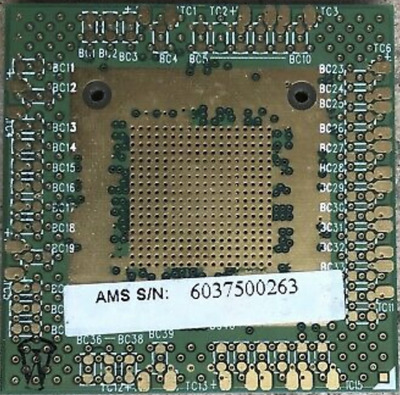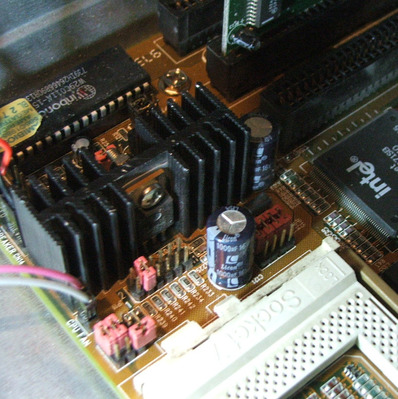Reply 20 of 50, by Sphere478
- Rank
- l33t++
Tetrium wrote on 2022-01-24, 17:10:I was using a DX4-100 with just a large passive heatsink and it seemed to run totally fine. However, I did notice that after pro […]
Sphere478 wrote on 2022-01-23, 11:15:And then there is the tillamook which I was running without a heatsink the other day… 😂 […]
Tetrium wrote on 2022-01-23, 10:55:Not sure this is what you're referring to, but the K6 does seem to have a much higher transistor count (compared to the Pentium […]
Not sure this is what you're referring to, but the K6 does seem to have a much higher transistor count (compared to the Pentium 1)(according to the wiki) which would result in higher power dissipation at similar voltages and frequencies.
The difference in the number of transistors is probably mostly because of this:
16KB L1 data cache + 16KB L1 instruction cache for the Pentium MMX
L1-Cache: 32 + 32 KB (data + instructions) for AMD K6But I think this would be sufficient explanation as to why the K6 233MHz is so much more power hungry compared to the Pentium 1 MMX 233MHz (any Pentium 1 basically 😜 ).
And then there is the tillamook which I was running without a heatsink the other day… 😂
Only playing in the bios and trying jumper settings but still, it just sat there, barely warm rofl.
Drop the voltage some and frequency and I can totally see heavy load with no heatsink.
I was using a DX4-100 with just a large passive heatsink and it seemed to run totally fine. However, I did notice that after prolonged use the heatsink would still be rather hot mostly because of how poor the ventilation was in that case (and my juryrigged cardboard sound dampeners could have helped prevent thermal dissipation through the sides of the case and to the rest of the case, but this is just a suspicion on my part).
Tillamook is definitely one heck of a cool chip ( 😜 ) but personally I'd not risk running it without a heatsink for a couple hours on end 😜
Not saying it couldn't work though, but it's easy to underestimate the effect of prolonged use has on poorly ventilated airspaces.
I’ve never taken apart a tillamook laptop but some of the tillamook chips like a 233 I just found don’t even have a way to thermally manage them. Like you can’t put a heatsink on them because it would short them out.

